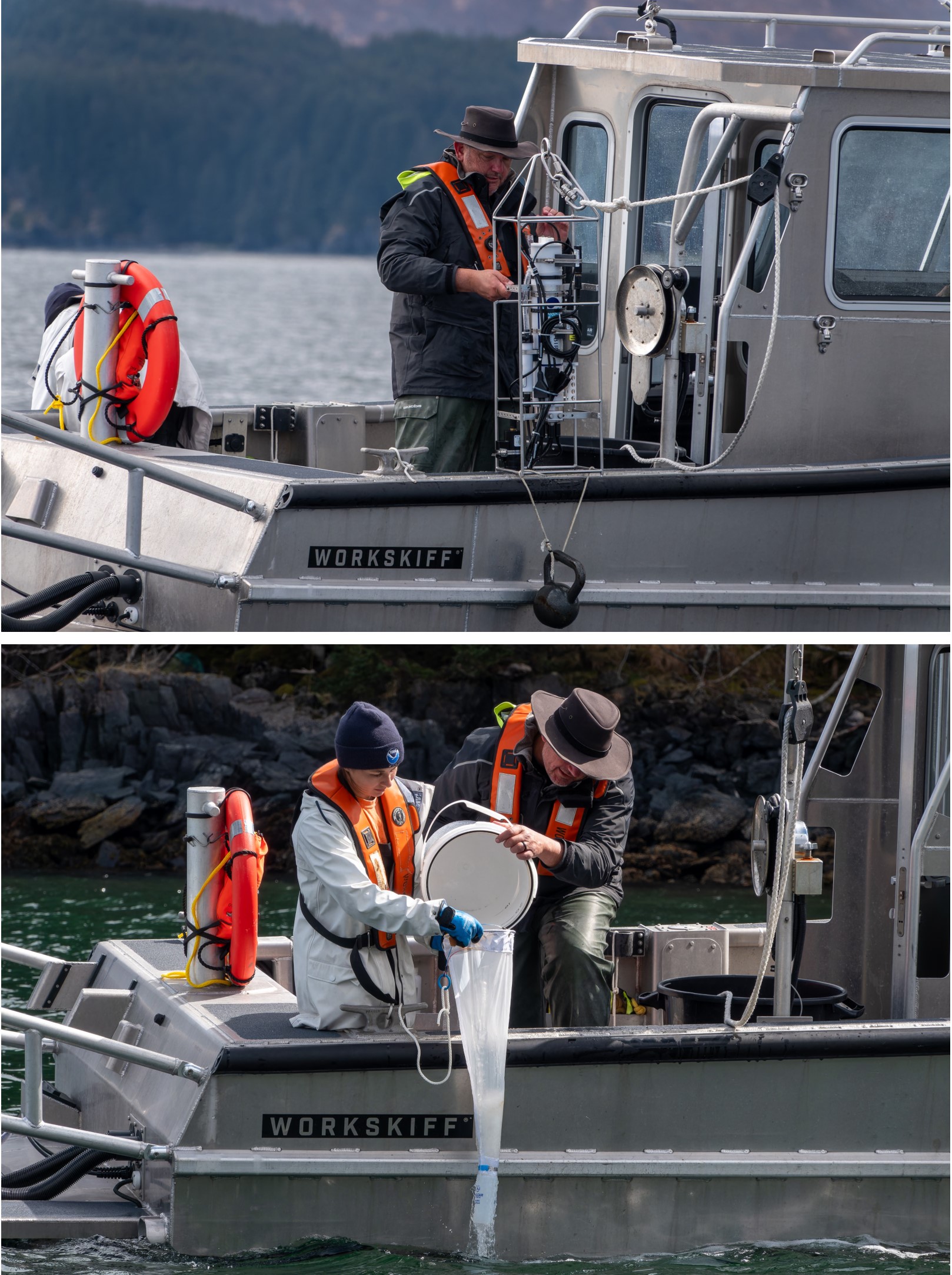Scientists with NOAA’s National Centers for Coastal Ocean Science and partners have completed the spring Alexandrium bloom mapping survey in Kodiak, Alaska, bringing them one step closer to testing a newly-developed harmful algal bloom (HAB) forecast model for the Kodiak Archipelago.

Many people living in this area, including Alaskan native communities, rely heavily on shellfish and other culturally significant species for subsistence harvesting in local waters and along beaches. However, this area is prone to outbreaks of Alexandrium catenella, a marine plankton species that forms HABs when present in abundance. This particular species produces neurotoxins that accumulate in shellfish, causing potentially fatal paralytic shellfish poisoning (PSP) upon consumption, and compromising the safety and security of the area’s food sources.
For the second year, scientists are surveying the area during HAB season, collecting water samples to process for cell abundance and toxin concentrations. The May 2025 survey captured the distribution of the Alexandrium bloom as it begins to impact oysters at local mariculture farms and subsistence-harvested clams from area beaches. A similar mapping survey is scheduled for June of this year, when Alexandrium blooms typically reach peak levels of abundance in Kodiak.
NCCOS scientists are in the process of improving a forecast model developed for the waters surrounding the Kodiak archipelago, an area that is difficult to forecast due to its remote location, extensive geography and scarcity of monitoring data needed to validate the model. The forecast will be used to help inform local communities when seafood is unsafe to consume due to elevated PSP risks, and as a demonstration project to build support for a more regional forecasting effort. Once established, this modeling framework can be applied to develop HAB forecast models across Alaska’s coastline.
This ongoing project is led by Alaska Sea Grant, and Kodiak Area Native Association (KANA) with funding from the NCCOS Competitive Research Program’s Monitoring and Event Response for Harmful Algal Blooms (MERHAB) and Ecology and Oceanography of Harmful Algal Blooms (ECOHAB) grants. Partners in this effort include the Alaska Fisheries Science Center, the Knik Tribe of Alaska, the Sitka Tribe of Alaska’s Environmental Research Lab, and several Tribal communities within the Kodiak region.
This work is authorized under the NOAA Authorization Act of 1992 (Pub. L. 102-567 (Oct. 29, 1992); sec. 201(c)), and the Harmful Algal Bloom and Hypoxia Research and Control Act (33 U.S.C. §§ 4001 et seq.).
